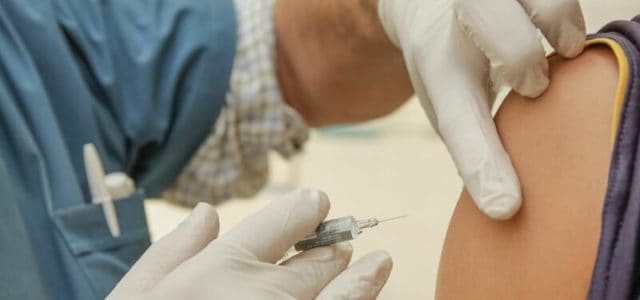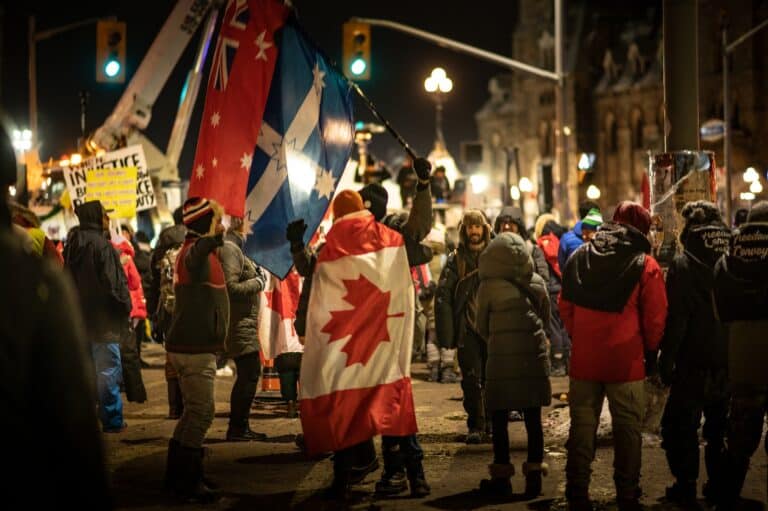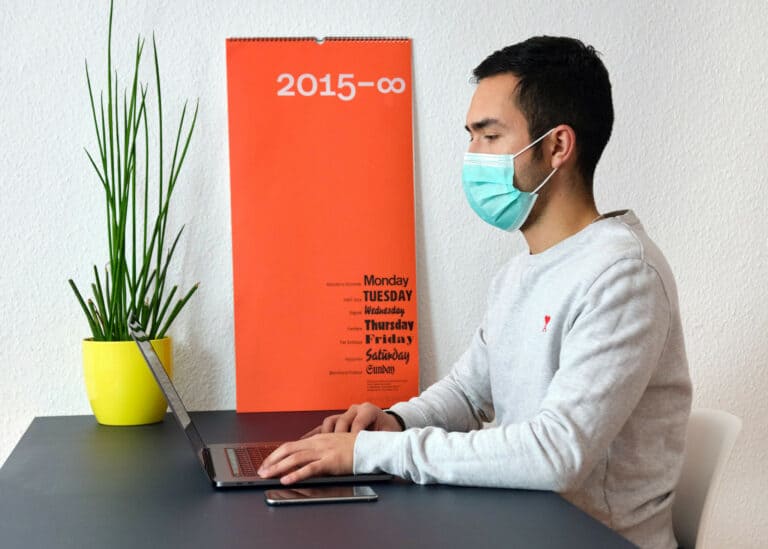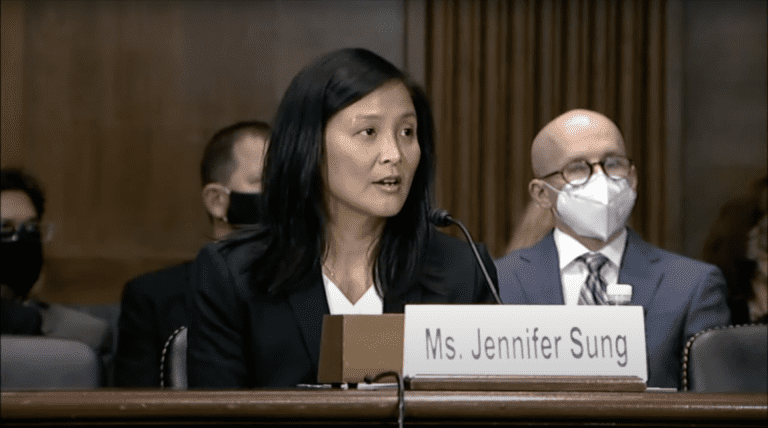
Juan Espinoza Muñoz is a student at Harvard Law School and a member of the Labor and Employment Lab.
A few weeks ago, I created a petition because domestic workers were not included in the current phase of vaccine administration. I did this because my mom and several of my aunts clean houses– including those of doctors exposed to Covid patients.
Like most first-generation children of immigrants that help their parents navigate healthcare, I did my research and learned that neither California nor county guidelines had included domestic workers. Not only were they not included in the present phase, but they were not even considered a category of essential frontline workers in the entire program. I sent an email to Riverside County officials responsible for the rollout hoping that this had simply been an oversight but received no response. I shared the email on social media and many responded with similar stories and offers of support.
There is so much research that shows how vulnerable yet essential domestic workers are, but to me, this is deeply personal. I grew up seeing my mom go to work as a housekeeper and sometimes attending the homes she cleaned on her days off. I grew up seeing how she delicately made beds, dusted family portraits, and carefully maneuvered Native American pottery and art. I saw and felt how she made and remade so many people’s homes – sometimes at the whim and power of employers who were present, and sometimes invisible while they were away.
I’m especially at a loss for how domestic workers have not been included as essential frontline workers because I’ve seen how essential my mom is to the people she serves during the pandemic. During the early months of isolation, she made favorite Mexican dishes for her most isolated and elderly clients. She delivered groceries. She checked in on those whose family couldn’t. She made calls and kept up with everyone as more than simply a cleaner, but rather, a proper caretaker and integral part of many families. Last summer, she was called by a friend of one of her clients because he lives alone and was not responding to phone calls. She arrived at his home to find that he had passed, to screams of that friend as she delivered the news on the phone, to find herself crying and delivering prayers for his peaceful rest as she watched officers recover the body. That women like my mom enter and make the homes of so many should be reason enough for them to be included in the present phase of the vaccine.
But they’re not because the current rollout of the vaccine tracks the significant omissions that plague workers’ rights in the United States. The Fair Labor Standards Act (“FLSA”), the National Labor Relations Act (“NLRA”), Title VII, and the Occupational Safety and Health Act (“OSHA”), all meant to protect and provide some semblance of worker protections, do not include or generally do not reach women who work in domestic settings. To this day, FLSA and the NLRA do not include agricultural and domestic workers.
It reminds me that I am watching history continue to unfold, and how clearly vestiges of racism embedded in our employment legal regime now extend to harms in how the vaccine is being rolled out. It’s a reminder that Black people, via omissions of agricultural and domestic workers from social security benefits and federal worker protections, have been excluded for so long. While I was delighted to see support for farmworker vaccination (my grandparents were Braceros and my parents also worked in seasonal farm work), the same cannot be said for domestic workers who do not have the same history of organizing, public visibility, and political favor behind them. It is also, perhaps, no coincidence that the service industries that are currently included in the present phase of the vaccine—manufacturing, logistics, construction—are dominated by men.
County Supervisor Victor-Manuel-Perez, Governor Newsom, and all other officials responsible for vaccinations, continue to ignore domestic workers. These workers–largely immigrant women of color—remain unseen and unprotected. They do not have specific designations and registration processes for the vaccine. They are not even among the essential workers considered in vaccination guidelines. They are not named or considered at all. Instead, domestic workers remain invisible, severely at risk, unprotected, and currently excluded from the vaccine.
Even if they were to be included in the present category of vaccination, domestic workers would likely fare similarly to other working-class immigrants and people of color when it comes to the vaccine– finding themselves at the end of the line within their tier of vaccine administration.
So much has gone wrong: Workers do not have time to refresh a website and compete for vaccinations. Many essential workers, especially immigrants like my parents, face a digital divide and are not able to access rapid-fire online registration. This has been made worse by the fact that the second dose of the vaccine is being administered via follow-up email. Immigrant workers who work in food, and are most at risk of dying, face linguistic barriers in accessing registration, and valid fear of government healthcare regimes. In the present tier of the rollout, specific calls to cooks and restaurant workers are not being widely made in Spanish – instead, the broad category of “Food” is left open to interpretation and not reaching those who most need it. There are no successful public media campaigns making the vaccine accessible to essential workers or assuaging skepticism, misinformation, and fear of the vaccine in Spanish. Instead, anti-vaxxers enhance fear and recently shut down the largest vaccine center in the country – a site that is meant to serve a predominantly Latinx city where a third of all deaths happened over the past four weeks. Sites for registering in Spanish are nonexistent or delayed. There is no automatic or employer led enrollment for isolated essential workers, including domestic workers. When the program launched in Riverside County, where 50% of the population is Latino, there was only a single vaccination site in the Coachella Valley – an area predominantly made up of working-class Latinos. Worse than this, essential workers are often undocumented, and unable to obtain the kind of employer verification currently required by the rollout. Also, they may fear that obtaining the vaccine requires engaging a government that readily triggers deportation. And they work in informal spaces (especially true of domestic workers), often have multiple employers, and exist in power dynamics that make it difficult to obtain employer verification.
All of these variables, compounding an already vulnerable position, make the process far from accessible to the communities that are most dying from the virus right now. In California alone, 48% of Covid deaths are Latinos yet we are 39% of the general population (given the number of Latino deaths in recent weeks, this number is likely much higher).
Just weeks ago, the Air Quality Management District put out a press release that lifted restrictions on the number of cremations allowed in LA county. Days after, California reopened. Crematoriums have since burned more people than what is normally considered healthy for air quality standards. More lives that rose as ash and air amongst us – like domestic workers, invisible and ignored.










Daily News & Commentary
Start your day with our roundup of the latest labor developments. See all
July 11
Regional director orders election without Board quorum; 9th Circuit pauses injunction on Executive Order; Driverless car legislation in Massachusetts
July 10
Wisconsin Supreme Court holds UW Health nurses are not covered by Wisconsin’s Labor Peace Act; a district judge denies the request to stay an injunction pending appeal; the NFLPA appeals an arbitration decision.
July 9
In Today’s News and Commentary, the Supreme Court green-lights mass firings of federal workers, the Agricultural Secretary suggests Medicaid recipients can replace deported farm workers, and DHS ends Temporary Protected Status for Hondurans and Nicaraguans. In an 8-1 emergency docket decision released yesterday afternoon, the Supreme Court lifted an injunction by U.S. District Judge Susan […]
July 8
In today’s news and commentary, Apple wins at the Fifth Circuit against the NLRB, Florida enacts a noncompete-friendly law, and complications with the No Tax on Tips in the Big Beautiful Bill. Apple won an appeal overturning a National Labor Relations Board (NLRB) decision that the company violated labor law by coercively questioning an employee […]
July 7
LA economy deals with fallout from ICE raids; a new appeal challenges the NCAA antitrust settlement; and the EPA places dissenting employees on leave.
July 6
Municipal workers in Philadelphia continue to strike; Zohran Mamdani collects union endorsements; UFCW grocery workers in California and Colorado reach tentative agreements.